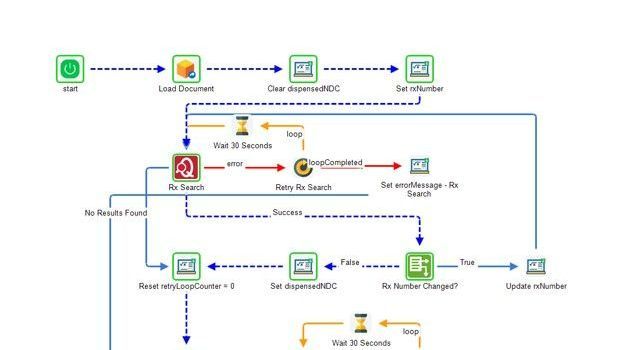Developers are tasked with more than just coding workflows—they must integrate deeply with business systems, build secure and scalable automation, and maintain flexibility as demands shift. As platforms like Pega (Java-based), Appian (low-code with limited customization), and FlowWright (.NET-based) compete for developer mindshare, the technical advantages of our architecture are becoming increasingly evident.
This guide breaks down why our .NET foundation is a game-changer for technical teams. We highlight key differences between us and Java-heavyweight Pega and low-code-oriented Appian, and explain how deep API access, native enterprise integration, and full-stack .NET compatibility make FlowWright an optimal choice for building complex, adaptable process automation.
The Technical Landscape for FlowWright
Before diving deep, it’s essential to understand the core philosophy behind each platform:
FlowWright: A full-featured BPM/workflow automation platform built on the Microsoft .NET stack. Designed with extensibility and control in mind, FlowWright supports RESTful APIs, C# extensibility, serverless logic, and tight enterprise integrations.
Let’s explore what that really means for developers.
Why .NET for Enterprise Development
Our platform's .NET foundation is more than a tech stack preference—it’s a strategic enabler for enterprise-ready applications. Here’s why .NET matters:
- Language Familiarity: .NET means C#, F#, and VB.NET. For most enterprise developers, C# is already a core language. This reduces onboarding time and leverages in-house expertise.
- Microsoft Ecosystem: Enterprises relying on Active Directory, SQL Server, Azure, SharePoint, and Windows Server benefit from native integrations. We seamlessly plugs into these, whereas Java-based or proprietary platforms require adapters or workarounds.
- Visual Studio + DevOps: FlowWright can be developed and debugged in Visual Studio, integrated into Azure DevOps pipelines, and deployed using standard CI/CD practices. You’re not limited to proprietary dev tools or command-line hacks.
- Performance & Scalability: The latest .NET (Core and 8) offers high-performance execution, multithreading, memory efficiency, and support for containerization and Kubernetes. Our software leverages these benefits out of the box.
Developer-Level Extensibility
Where FlowWright excels is its developer-centric design:
a. Custom Steps in C#
Need a specialized action? FlowWright allows you to create custom steps in C# and plug them into your workflows. Whether you're connecting to a legacy mainframe or invoking a third-party API, you control the logic fully.
Contrast this with Pega, where rule sets and Java customizations require platform-specific knowledge, or Appian, where custom logic often becomes a workaround rather than a first-class citizen.
b. Deep REST & GraphQL APIs
FlowWright exposes a comprehensive, well-documented REST API that gives developers access to every function—from workflow initiation to audit history to form submission. These APIs are:
- Secure (OAuth2, API Keys)
- Fast (low-latency, optimized .NET backends)
- Flexible (support for JSON, file upload/download, external triggers)
You’re not restricted to what the GUI offers—you can script, automate, and scale programmatically. This API-first design aligns with modern microservices architectures and CI/CD automation strategies.
We on the other hand, gives you total infrastructure flexibility:
- Deploy to IIS or run headless via Kestrel
- Host on Windows Server or in a Docker container
- Use SQL Server or plug into an external DB cluster
- Configure caching, memory, and background job processing
Developers and DevOps teams get full observability into the stack. Logs can be integrated with OpenTelemetry, Seq, or Datadog. Performance profiling can be done with .NET tools, and auto-scaling is supported in Kubernetes.
Enterprise Integration Built In
Developers today are asked to "connect everything"—ERPs, CRMs, document systems, analytics, and security layers. Our native connectors and APIs make that seamless:
- Office365 & SharePoint Integration: Authenticate, retrieve, and manage documents and lists.
- Active Directory / LDAP: Use enterprise identity for SSO and RBAC.
- Azure / AWS / GCP: Deploy on any cloud, with full support for cloud-native monitoring, logging, and identity.
- Database Support: Execute SQL queries, call stored procedures, or stream data into ETL pipelines with transactional integrity.
Rather than bolting on middleware (as with Pega), or requiring Appian plugins, FlowWright makes integration a first-class part of the platform.
Debugging, Testing, and CI/CD
For technical teams, debugging is half the job. Here’s how our .NET platform streamlines that:
- Workflow Debugger: Visually trace workflow paths, inspect variables, and replay scenarios.
- Versioning: Workflows, forms, and components are version-controlled with rollback.
- Automated Testing: Workflows can be executed via APIs and validated with test harnesses.
- CI/CD Ready: Store workflows and components as XML, integrate into Git repositories, and auto-deploy using pipelines.
In contrast:
- Pega supports Dev Studio, but not true GitOps practices.
- Appian favors UI-only development, which slows down automated testing or diff-based source control.
Developer Experience & Productivity
We put the developer first:
- Build serverless logic in steps or tasks using C#
- Use JavaScript and JSON to manipulate forms
- Extend or override any component—email templates, rules, security hooks, process execution
- Create reusable components, package them, and distribute to teams
This level of openness is rare in enterprise BPM tools. It’s a platform built for engineers who want to ship fast, secure, scalable solutions—without handcuffs.
Example Use Cases for .NET Workflow
a. Manufacturing Automation
A .NET-heavy manufacturing firm needed ERP + IoT + HR process orchestration. FlowWright integrated with SAP (via REST), Azure IoT (via webhook), and ran predictive logic in C# steps. No other platform offered that level of deep backend control.
b. Banking Compliance
A financial institution built workflows to validate KYC/AML documents. FlowWright used document AI for classification, stored metadata in SQL, and exposed real-time dashboards using custom widgets. All components were versioned, logged, and API-accessible.
c. SaaS Workflow Embedding
An ISV embedded FlowWright into their SaaS product, using REST APIs to manage user workflows per tenant. With .NET backends and multi-tenant support, FlowWright acted as a headless workflow engine. Appian and Pega were ruled out due to pricing and lack of embedding options.
Final Thoughts
Pega and Appian have their strengths—but their architectures reflect legacy assumptions or low-code constraints. FlowWright is different. It gives technical teams:
- Full control of the workflow engine
- A familiar .NET environment
- Real APIs, real extensibility, real automation
In a world where enterprises demand agility, integration, and security, FlowWright empowers your development team to build solutions—not fight against the platform. Schedule a demo to explore our .NET automation features and discover how it can scale using workflow automation.







